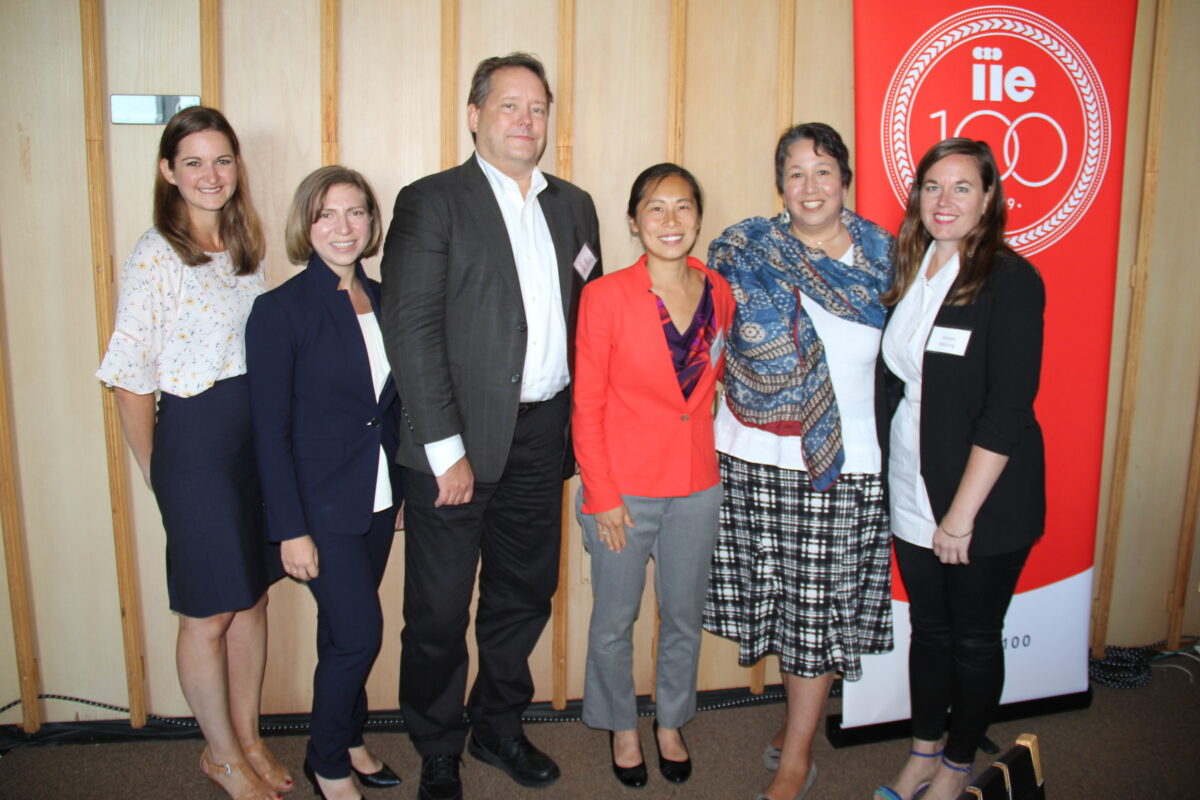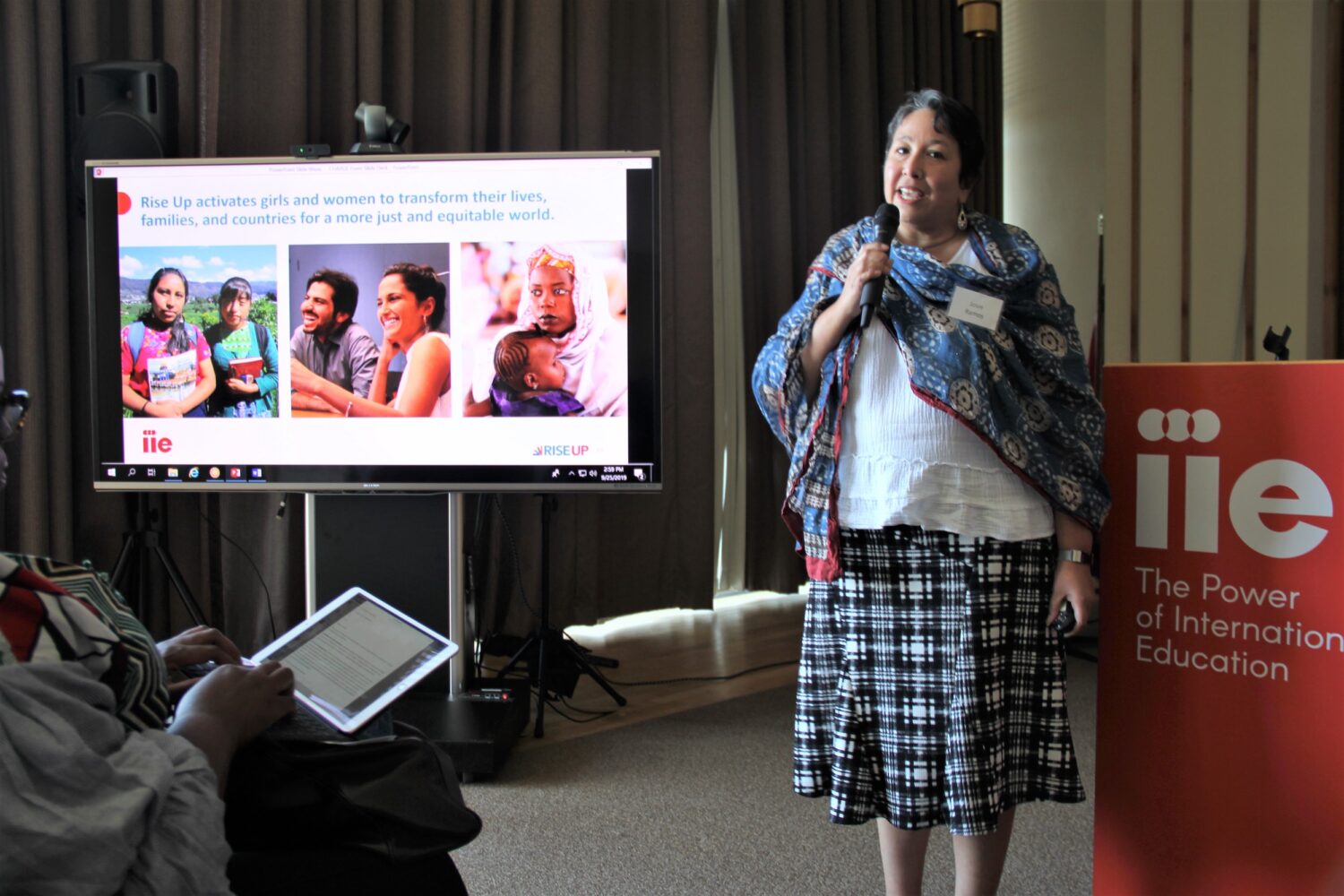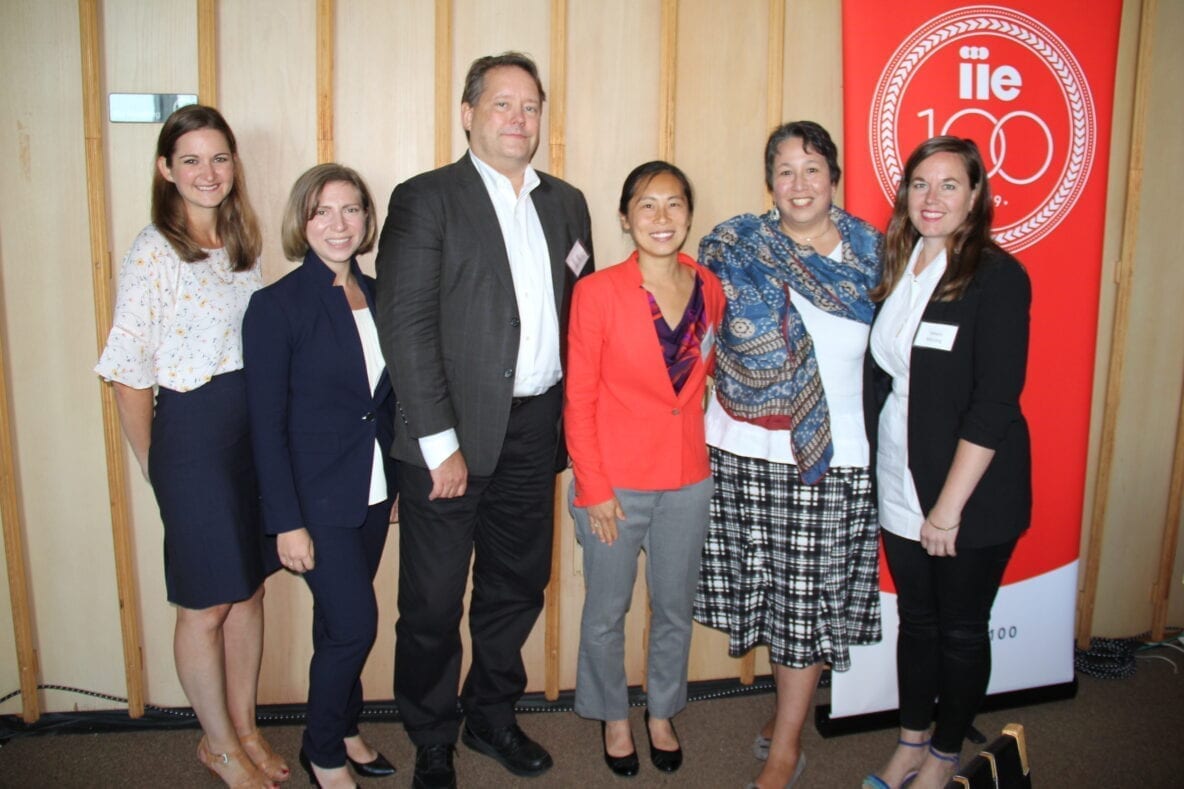By Kaitlin Chandler Brooks and Josie Ramos, Rise Up; Natalie Geismar and Christina Kwauk, Center for Universal Education at Brookings; and Evgenia Valuy, Institute of International Education
How do you create real change for girls? This is the question that brought together Rise Up, the Institute of International Education (IIE), the Center for Universal Education at Brookings (CUE), and BRAC in our shared goal of advancing girls’ education using a measured approach. In support of Girls CHARGE (Collaborative for Harnessing Ambition and Resources for Girls’ Education), we convened alongside Equal Measures 2030 and Miske Witt & Associates International at the United Nations General Assembly last month to move the needle for girls’ education and share our findings, lessons learned, and achievements with the field.

Panelists at UNGA’s side event, from left: Mirka Martel (IIE), Evgenia Valuy (IIE), Albert Motivans (Equal Measures 2030), Christina Kwak (Brookings), Josie Ramos (Rise Up), Devon McLorg (BRAC)
Together, we are building an evidence base on effective programming to improve the lives of girls and women. For example, BRAC shared their learnings from a failed attempt to replicate a program in Bangladesh that was successful in Uganda; Equal Measures 2030 shared their experience on data-driven advocacy for girls’ education; IIE described their approach to an external evaluation of Rise Up’s work over the past ten years, and MWAI provided insights into measuring the impact of girls’ education leaders in the Echidna Global Scholars Program. These evaluations reinforced several important considerations for evidence-based programming and impact measurement in the field of girls’ education.
Here’s what we’ve learned:
- Bringing girls to the center is key. Before the evaluation even begins, effective programs must be girl-centered, engaging girls in an analysis of their own needs and priorities, in the design of the intervention, and in assessing what approaches best serve girls’ needs.
- Reporting mechanisms and accountability metrics must balance inclusivity and specificity. There are challenges in measurement stemming from the need to create indicators that are broad enough to encompass the organization’s work, but specific enough to be meaningful for tracking collective progress. Broad indicators such as “improved learning outcomes,” while mappable to many types of programming, may be interpreted in different ways and can be very difficult to track over time. It can also lead the collective to undercut transformative change if organizations are defining and measuring the indicator differently.
- Both quantitative and qualitative methodologies must be used to gain a holistic, nuanced understanding of the program’s impact. The impact should be studied from multiple angles. While the field often prioritizes quantitative analysis, qualitative methodologies play a critical role in grounding numerical data in girls’ daily lived realities.
- Reporting procedures should be mappable to the organizations’ processes. Reporting efforts should meet organizations where they are, leveraging existing monitoring and evaluation capacity, rather than relying on a one-size-fits-all approach.
- Reporting processes must be rigorous, standardized, and consistent, with room for feedback from stakeholders. It is necessary to designate a clear and consistent line of authority for data collection, analysis, and measurement to guarantee the highest degree of accuracy and internal validity possible.
- All stakeholders must be engaged in the planning of the evaluation and interpretation of the data to maximize learning and program improvement.

Rise Up Director of Programs Josie Ramos shares Rise Up’s evidence-based approach to improve the lives of girls and women around the world
As we move toward 2030, maintaining our focus on girls’ education is critical to achieving the Sustainable Development Goals. By designing and implementing girl-centered programs and evaluations that leverage lessons and evidence from the field, we can strengthen the movement for girls’ education and effectively activate girls to transform their own lives, families, and communities. All partners are excited to share more lessons, including from Brookings’ evaluation findings and from IIE’s external evaluation of Rise Up’s decade of impact. Stay tuned for those findings on what it takes to create real and lasting change for girls around the globe.


